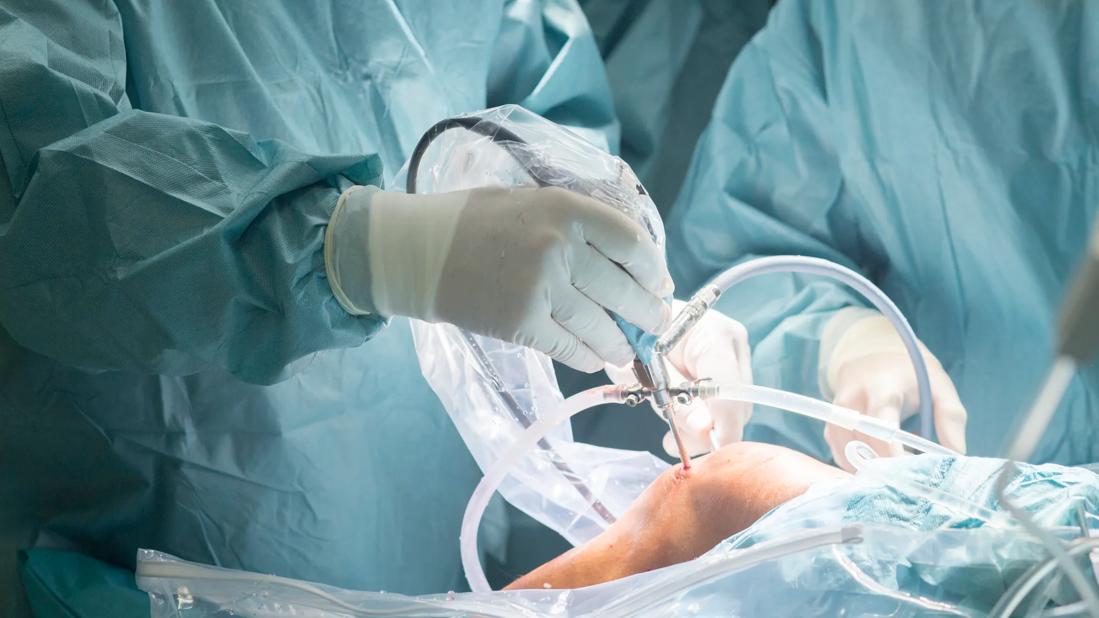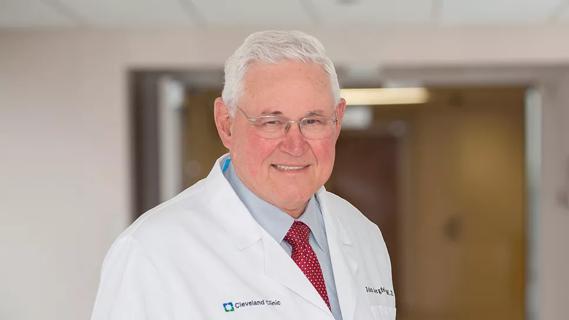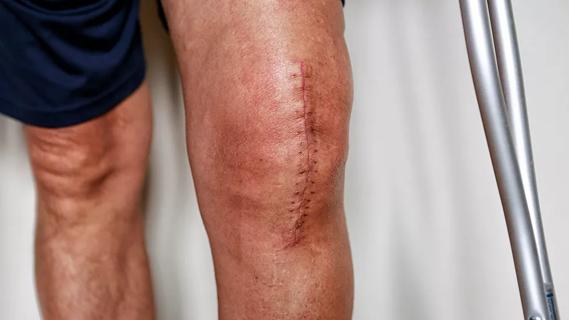Largest cohorts to date reveal low rates of major complications

Several new studies from Cleveland Clinic show that complication rates after patellofemoral stabilizing surgery are much lower than previously reported. Additionally, one of the two more common surgical treatments for patellar instability, tibial tubercle osteotomy (TTO), appears to help prevent osteoarthritis in young patients.
Advertisement
Cleveland Clinic is a non-profit academic medical center. Advertising on our site helps support our mission. We do not endorse non-Cleveland Clinic products or services. Policy
For patients experiencing patellar instability, there are two commonly performed surgical techniques used as treatment. Medial patellofemoral ligament reconstruction (MPFLr), is a soft-tissue procedure and is the most commonly used technique to address instability. In some cases, a bony procedure, TTO, is added to restore the force vectors acting on the patella. Our three recently published studies looked at complication rates following these two procedures.
“We know these surgeries are very effective at treating patellofemoral instability, but the published incidence rates for their postoperative complications have been inconsistent,” says Sercan Yalcin, MD, an orthopaedic sports medicine surgeon at Cleveland Clinic and the lead author on all three papers. “Most of what’s currently out there comes from studies with very small cohorts or a single surgeon data. Our studies used a large cohort and data from multiple surgeons.”
The first study, published in The Journal of Knee Surgery, looked at early complication rates among patients in the first 90 days following MPFLr. Out of 140 MPFLrs, the authors found that just 17 patients were readmitted. The most common reason for readmission was pain (7/140, 5%), followed by cellulitis (5/140, 3.5%). The only major complication (pulmonary embolism) was experienced by one patient (1/140, 0.7%). The authors also found that patients who are ever smokers are 4.5 times more likely to be readmitted in the first 90 days after surgery.
The second study, which appeared in The Orthopaedic Journal of Sports Medicine, was similar to the first, but this one focused on the incidence rates in the first 90 days following a TTO procedure. The study found that among 345 procedures, the incidence rate was 20.6% (71/345). Postoperative pain was the most common reason for readmission (26/345 [7.5%]), followed by wound complications (19/345 [5.5%]) and epidural catheter-related complications (overall: 16/345 [4.6%]; specific: 16/167 [9.6%].
Advertisement
“Something a bit unique to this study is the inclusion of epidural-catheter complication rates,” says Dr. Yalcin. “These were only used in the first few years of the study before being replaced by regional blocks. The data around catheters in this study were based on one surgeon on our staff who used them before switching to regional blocks, and any complications associated with catheters were temporary and resolved without issues.”
Like the MPFLr study, the incidence rate for major complications in this study was also quite low — 2.0% (7/345). The major complications included: one patient for deep vein thrombosis, two for pulmonary embolism, one for septic arthritis, one for a tibial tubercle fracture and two for loss of fixation. Once again, smoking was associated with a higher likelihood of readmission for pain, but the authors found that female sex was also associated with a higher readmission rate.
The third study, also appearing in The Orthopaedic Journal of Sports Medicine, looked at long-term complication rates after TTO. The study included 72 patients with a mean follow-up period of 104.8 months (range, 67-138 months). While the overall complication rate was 38.9% (28/72 patients), the major complication rate was much lower at 6.9%. The authors found that patients with a history of smoking were more likely to experience a complication (odds ratio = 4.33 [95% CI, 1.29-14.53]; P = .02). Multivariate analysis using TTO as the main predictor showed that the TTO procedure did not affect complication rates (TTO vs TTO+other), number of screws nor distalization. The authors also found no difference between anteromedialization and medialization TTO techniques. Furthermore, only 11.9% of patients had progression in tibiofemoral osteoarthritis at midterm follow-up.
Advertisement
“These findings reinforce what we already know — that patellofemoral stabilizing surgeries are safe,” says Dr. Yalcin. “But the big takeaway from these papers is how low the major complication rates associated with these surgeries actually are. We’ve seen papers with incidence rates higher than 40%, so the fact that our studies, which used much larger cohorts, all had very low incidence rates of major complications is very exciting. Additionally, all three of our studies showed that smoking greatly increases a patient’s likelihood of readmission, so this is just one more reason why it’s important to work with our patients to help them quit.”
Advertisement
Advertisement

Self-care may be just as effective for some patients

Most return to the same sport at the same level of intensity

More report a clinically meaningful change in function at 90 days compared to patients with lower BMI

Patient climbs Mount Kilimanjaro 8 months after surgery

Sports medicine pioneer John Bergfeld, MD, shares how orthopaedics has changed since doing his first ACL repair in 1970

How to diagnose and treat crystalline arthropathy after knee replacement

Special glasses allowed surgeon to see 3D models and anatomic data superimposed on surgical field

When procedure is performed by high-volume surgeons, outcomes are comparable to total knee replacement